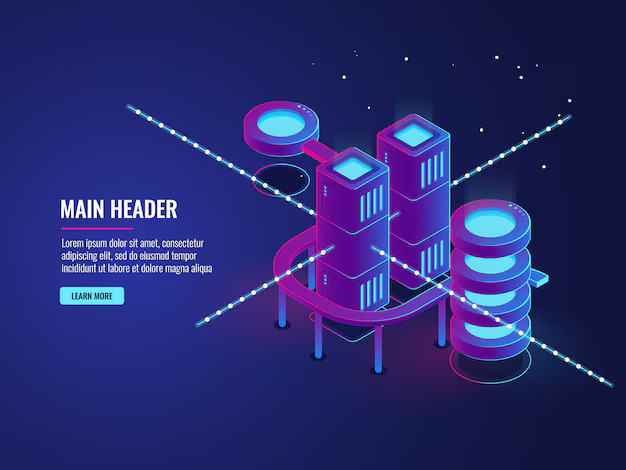Exploring Web3 Authentication in Blockchain Applications – Decentralized Identity Smart Contract Wallet

Within the vast realm of digital connectivity, emerging technologies have set the stage for transforming the way we authenticate our identities and access online resources. This rapidly evolving landscape embraces an innovative approach known as Web3 authentication, a cutting-edge solution that seamlessly integrates with blockchain technology to create a new era of secure and decentralized online experiences.
The conventional methods of authentication, relying heavily on centralized systems and intermediaries, have often been plagued by vulnerabilities and privacy concerns. In this era of rapid digital transformation, the need for a robust and trustworthy authentication mechanism has become paramount. Web3 authentication rises as the beacon of hope, offering a decentralized and transparent approach that revolutionizes the way individuals, organizations, and applications verify identities and authorize access.
By leveraging the power of blockchain technology, Web3 authentication ensures that individuals remain in full control of their digital identities. Gone are the days where reliance on third-party entities for identity verification is deemed necessary. Instead, users are empowered with cryptographic keys, enabling them to interact directly with blockchain networks and securely authenticate their identities without the need for intermediaries.
This game-changing paradigm shift not only promises enhanced security and privacy but also opens up a whole new world of possibilities for seamless integration of identity verification into various blockchain applications. From decentralized finance to supply chain management and from healthcare to social networking, Web3 authentication paves the way for a future where trust, transparency, and user empowerment are at the core of every digital interaction.
What is Web3 Authentication?
Web3 authentication refers to the process of verifying and confirming the identity of users in decentralized applications built on blockchain technology. It represents a significant advancement in the way authentication is conducted, breaking away from traditional centralized systems.
In Web3 authentication, the focus shifts from relying on a central authority such as a server or a government entity to authenticate users, towards a decentralized approach. This approach leverages the transparent and immutable nature of blockchain technology to ensure the integrity and security of user identities.
Web3 authentication relies on cryptographic principles to create a secure and tamper-proof system. It utilizes private and public key pairs, digital signatures, and decentralized identity protocols to establish trust and authenticity without the need for intermediaries.
By eliminating the need for centralized authorities, Web3 authentication democratizes access and control over personal data, giving users the power to manage their own identities. It offers increased privacy, as users have full control over their data and can choose what information to share and with whom. Additionally, Web3 authentication reduces the risks associated with data breaches and identity theft by removing the single point of failure inherent in centralized systems.
Overall, Web3 authentication represents a paradigm shift in how we approach identity verification in online interactions. It introduces a new level of security, privacy, and user control, enabling the development of more robust and user-centric blockchain applications.
The Importance of Authentication in Blockchain Applications web3 authentication work
Ensuring secure and reliable access to blockchain applications is crucial for maintaining the integrity and trustworthiness of the system. In this section, we will discuss the significance of authentication in blockchain applications and explore how it enhances the overall security and functionality of the network.
Enhancing Security
Authentication plays a vital role in bolstering the security of blockchain applications. By implementing robust authentication mechanisms, such as digital signatures and multi-factor authentication, users can prove their identity and ensure that only authorized individuals gain access to the system. This not only prevents unauthorized access but also protects sensitive data and transactions from malicious attacks.
Furthermore, authentication fosters trust among users by providing a transparent and verifiable way to validate their interactions with the blockchain. Through authentication, participants can verify the authenticity and integrity of transactions, ensuring that the information recorded on the blockchain is accurate and tamper-proof.
Enhancing Functionality
In addition to security benefits, authentication also enhances the functionality of blockchain applications. By verifying the identity of participants, authentication enables the establishment of reputation systems and governance structures within the network. This allows for more efficient consensus mechanisms, as participants are accountable for their actions and reputations can be built based on past behavior.
Authentication also facilitates the seamless integration of different blockchain applications and interoperability among various systems. By utilizing standardized authentication protocols, such as OAuth or OpenID Connect, users can access multiple blockchain applications using a single set of credentials. This simplifies the user experience and encourages wider adoption of blockchain technology.
| Benefits of Authentication in Blockchain Applications: |
|---|
| Enhanced security through identity verification |
| Transparent and verifiable validation of transactions |
| Establishment of reputation systems and governance structures |
| Improved interoperability among blockchain applications |
Common Authentication Mechanisms in Web3 wallet web3 auth
In the context of exploring the intersection of decentralization and identity verification in internet applications, various authentication mechanisms have emerged within the Web3 landscape. These mechanisms provide secure and trustless ways for users to authenticate themselves without relying on centralized authorities or intermediaries.
One prevalent authentication mechanism in Web3 is the use of cryptographic keys. Instead of traditional usernames and passwords, users generate and manage public-private key pairs, where the private key serves as their unique identifier. This approach ensures strong security as the private key is mathematically linked to the individual and can only be accessed or used by the rightful owner.
Another widely used authentication mechanism is smart contract-based authentication. In this approach, users interact with smart contracts deployed on a blockchain, which act as self-executing agreements. Through the execution of predefined rules within these contracts, users can prove their identity and gain access to certain services or features. Smart contract-based authentication offers transparency and immutability, as all interactions are recorded on the blockchain and can be publicly verified.
Additionally, Web3 authentication often involves the integration of decentralized identity platforms. These platforms enable users to have full control over their identity information by leveraging technologies like self-sovereign identity (SSI) and verifiable credentials. By utilizing decentralized identity platforms, users can establish their digital identity, manage their credentials, and selectively disclose information as needed while maintaining privacy and security.
Furthermore, biometric authentication is also gaining traction in Web3 applications. Biometric authentication utilizes unique physical or behavioral traits of individuals, such as fingerprints, facial recognition, or voice patterns, to verify their identity. This mechanism provides convenience and enhanced security, as biometric data is difficult to forge or replicate.
In conclusion, Web3 authentication mechanisms offer decentralized and secure methods for users to authenticate their identities in blockchain applications. By utilizing cryptographic keys, smart contracts, decentralized identity platforms, and biometric authentication, Web3 applications can provide enhanced privacy, security, and user control over their digital identities.
Challenges and Limitations of Web3 Authentication
In the realm of decentralized digital identity and security, there are various obstacles and constraints that arise when it comes to web3 authentication. This section delves into the difficulties and limitations encountered in the process, exploring the hurdles faced by users and developers alike.
One of the foremost challenges revolves around user experience. With web3 authentication, the traditional approach of relying on usernames and passwords is replaced with cryptographic keys and wallets. While this offers enhanced security, it also introduces complexity for users who may not be familiar with managing such keys. Additionally, the responsibility of safeguarding these keys falls squarely on the users, making it crucial to educate and empower them to protect their digital assets.
Another significant limitation is the interoperability between different web3 ecosystems. As the concept of web3 evolves, different blockchain platforms and protocols emerge, each with its own unique identity infrastructure. Ensuring seamless and secure authentication across these diverse ecosystems becomes a considerable challenge. Developers face the task of building bridges and compatibility layers to enable cross-platform authentication, which adds complexity and can hinder widespread adoption of web3 authentication systems.
Moreover, scalability poses a pressing limitation for web3 authentication. As blockchain networks continue to gain traction, the need to handle a growing number of users and transactions becomes imperative. However, existing web3 authentication mechanisms often rely on the blockchain itself to verify and authenticate identities, which can lead to scalability issues. Finding efficient and scalable solutions for web3 authentication without compromising privacy and security remains an ongoing challenge.
Lastly, the issue of privacy arises as an important consideration in web3 authentication. While the underlying blockchain technology offers transparency and immutability, it also presents challenges in preserving user privacy. Public key addresses associated with users’ digital identities can be traced and linked to their activities, potentially jeopardizing their privacy. Striking a balance between accountability and privacy in web3 authentication is a complex problem that requires innovative solutions to protect user information.
Emerging Trends in Web3 Authentication
In this section, we will explore the latest developments and trends in the field of Web3 authentication, focusing on the innovative approaches and technologies that are reshaping the landscape of secure online identification and access control. The rapid advancement of blockchain-based authentication systems has opened up new possibilities for decentralized and user-centric authentication methods.
1. Decentralized Identity
One of the key trends in Web3 authentication is the adoption of decentralized identity solutions. These systems aim to give users full control over their digital identities, enabling them to manage and authenticate themselves while maintaining privacy and security. Decentralized identity platforms leverage blockchain technology to create immutable and tamper-proof identity records, ensuring that users can prove their identity without relying on centralized authorities.
2. Self-Sovereign Identity
Self-sovereign identity is another emerging trend in Web3 authentication. It refers to the concept of individuals having full ownership and control over their digital identities, allowing them to selectively share personal information with trusted parties. Self-sovereign identity systems leverage cryptographic techniques to enable secure and verifiable identity claims, empowering users to authenticate themselves in a privacy-preserving manner.
- Identity Wallets: Identity wallets are becoming increasingly popular as a means of securely storing and managing digital identities. These wallets enable users to store their identity credentials, such as cryptographic keys and personal information, locally on their device, ensuring that they have full control over their identity data.
- Zero-Knowledge Proofs: Zero-knowledge proofs are cryptographic techniques that allow users to prove the authenticity of certain information without revealing the actual data itself. These proofs enhance privacy by enabling users to authenticate themselves without disclosing unnecessary personal details.
- Decentralized Identifiers (DIDs): DIDs are a key component of self-sovereign identity systems. They are globally unique identifiers that are created and controlled by users themselves, providing a foundation for secure and decentralized identity management.
Overall, the emerging trends in Web3 authentication are centered around empowering users with greater control and privacy over their digital identities. The adoption of decentralized and self-sovereign identity solutions, along with the utilization of identity wallets, zero-knowledge proofs, and DIDs, heralds a new era of secure and user-centric authentication in the evolving Web3 ecosystem.
Best Practices for Implementing Web3 Authentication in Blockchain Applications
Ensuring secure and efficient authentication is a crucial aspect of implementing Web3 technology in blockchain applications. This section will explore some of the best practices that can be followed to achieve robust and reliable authentication mechanisms without compromising user experience or compromising the integrity of the blockchain network.
1. Utilizing Decentralized Identifiers (DIDs)
DIDs, or Decentralized Identifiers, play a vital role in Web3 authentication. They enable users to have control over their identity and data, ensuring privacy and security. By incorporating DIDs into the authentication process, blockchain applications can authenticate users without relying on centralized authorities or intermediaries. This approach guarantees a peer-to-peer, trustless authentication method that aligns with the core principles of blockchain technology.
2. Implementing Multi-Factor Authentication
Multi-factor authentication (MFA) adds an extra layer of security and mitigates risks associated with single-factor authentication. By combining something a user knows (e.g., a password), something a user possesses (e.g., a hardware wallet), and something unique to the user (e.g., biometrics), MFA minimizes the chances of unauthorized access to user accounts. Blockchain applications should encourage and support the implementation of MFA to enhance user protection and prevent potential security breaches.
Implementing Web3 authentication in blockchain applications requires careful consideration of various factors, such as user privacy, security, and user experience. By leveraging decentralized identifiers and implementing multi-factor authentication, developers can design and build authentication systems that align with the decentralized and secure nature of blockchain technology.
Q&A: Exploring web3 authentication in blockchain applications
How does the decentralized nature of web3 improve authentication compared to traditional authentication methods?
The decentralized nature of web3 improves authentication by eliminating the need for centralized third-party services, reducing the risk of data breaches and enhancing user privacy. Unlike traditional authentication methods that rely on centralized servers, web3 utilizes blockchain technology to verify identities, making it more secure and resistant to hacks.
What is the role of two-factor authentication in traditional authentication methods, and how does it differ in web3?
In traditional authentication methods, two-factor authentication adds an extra layer of security by requiring users to provide two forms of identification, typically something they know (password) and something they have (phone). In web3, authentication can integrate multi-factor approaches directly onto the blockchain, enhancing security without relying on centralized services.
How does the transition from web2 to web3 affect the way websites and applications handle authentication and authorization?
The transition from web2 to web3 affects websites and applications by shifting authentication and authorization processes from centralized systems to decentralized networks. Web3 authentication tools allow for secure identity verification through blockchain technology, enabling users to control their data and reducing reliance on traditional third-party authentication services.
What advantages does web3 authentication offer over traditional centralized authentication methods?
Web3 authentication offers several advantages over traditional centralized methods, including enhanced security, user privacy, and control over personal data. It eliminates single points of failure and reduces the risk of data breaches by distributing authentication processes across a decentralized network.
How do decentralized exchanges (DEXs) utilize blockchain technology for authentication and transaction verification?
Decentralized exchanges (DEXs) utilize blockchain technology for authentication and transaction verification by employing smart contracts to facilitate secure and transparent trading. This eliminates the need for intermediaries and central authorities, allowing users to trade directly with one another while maintaining control over their private keys.
What are some common authentication methods used in web3 development, and how do they compare to traditional methods like OAuth?
Common authentication methods in web3 development include digital signatures, decentralized identifiers (DIDs), and zero-knowledge proofs. Unlike traditional methods like OAuth, which rely on third-party services to grant access, web3 methods authenticate users directly on the blockchain, providing enhanced security and privacy.
How can developers integrate web3 authentication into existing web2 applications?
Developers can integrate web3 authentication into existing web2 applications by using web3 development platforms and libraries that support blockchain interaction. This involves adding decentralized identifiers, smart contracts, and web3 wallets to the application, allowing users to authenticate and interact with the blockchain seamlessly.
What are some challenges associated with implementing web3 authentication in new applications?
Challenges associated with implementing web3 authentication include ensuring compatibility with different blockchain networks, managing private keys securely, and educating users about new authentication processes. Additionally, developers must address the scalability and usability issues inherent in decentralized systems to provide a smooth user experience.
How do decentralized autonomous organizations (DAOs) benefit from web3 authentication?
Decentralized autonomous organizations (DAOs) benefit from web3 authentication by enabling secure, transparent, and democratic governance. Web3 authentication allows DAO members to verify their identities and vote on proposals without relying on centralized authorities, ensuring that decisions are made collectively and securely.
What is the significance of blockchain and distributed ledger technologies in the evolving landscape of web3 authentication?
Blockchain and distributed ledger technologies are significant in the evolving landscape of web3 authentication because they provide a secure and tamper-proof way to verify identities and transactions. These technologies decentralize control, enhance transparency, and increase trust among users, making web3 authentication more reliable and resilient than traditional methods.


